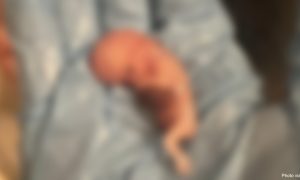The story of a Canadian mother of three who was considering doctor-assisted suicide is shining a light on one of the fatal flaws of pro-euthanasia laws.
Alex Schadenberg, executive director of the Euthanasia Prevention Coalition, wrote on his blog that Jennifer Monaghan had been suffering for 17 years with an undiagnosed chronic pain condition and was considering euthanasia under the country’s medical assistance in dying (MAiD) law. However, she changed her mind after finally being correctly diagnosed with a treatable medical condition. She shared her story with Citytv for an upcoming documentary called Veracity: MAiD in Canada.
According to CityNews, Monaghan, now 43, had been dealing with narcolepsy since she was 13. But when she began experiencing shooting pain down her leg, her life changed. “It was really overwhelming because all of a sudden, life had to stop,” she said. “And I was going to the doctors and trying to figure out what was wrong. And I didn’t know what was wrong.”
She was in constant pain, but doctors could not figure out why. She began to believe it was in her head and after 17 years, she began to research MAiD to see if she qualified for doctor-assisted suicide.
READ: Assisted suicide now being promoted for people with anorexia
“By that point, I was stuck in bed and I’d really had quite a low point where I just felt like I had tried everything, tested every product on the market, went to all the extra things like a chiropractor, a naturopath,” she explained. “I just tried everything I could and I just couldn’t get there and so that’s when I decided to consider medically assisted [suicide.]”
But then, with some hope left, she had one more neurology appointment scheduled when her sleep doctor suggested she try a higher dose of the drug amitriptyline, which is often used to treat narcolepsy. Monaghan met with the neurologist, who saw that she was on this drug. She told him all about her symptoms and he said he knew exactly what was wrong with her.
“Small fiber sensory neuropathy,” said Monaghan. “Basically, my brain is sending signals to different areas of my body, like shocking pain or cold water. It’s my brain reading the signals wrong, [the] pain signals wrong. So my brain thinks there’s all this pain going on, but my brain technically is creating it.”
She added, “I was elated that I hadn’t lost my mind. I was so happy that this thing had a name and I didn’t give up. And I asked for that one more appointment.”
After finally receiving treatment and ripping up her MAiD application, her pain began to disappear. Now, she is enjoying being a first-time grandmother. “And it’s the best thing that’s ever happened to me. It is so nice to be able to spend time with them,” she said. “Now… I just feel so blessed, I feel super blessed that I got this opportunity and to this day; I won’t waste a minute of it.”
Though she said she may consider applying for suicide in the future if the pain returns, for now, she said, “I love my life now and I appreciate it in a completely different way.”
Monaghan is not alone. In 2016, Mya DeRyan survived a suicide attempt only to find out later that she had been misdiagnosed with a terminal illness. In 2013, Pietro D’Amico died by assisted suicide after facing a diagnosis that his autopsy revealed to be incorrect.
Assisted suicide and euthanasia are pushing some people into death when there are real treatment options available to them. Some people have been told they had months to live, but with treatment, continue to survive for years. About 12 million people face medical misdiagnoses each year in the United States and up to 80,000 of them will die from complications caused by the misdiagnosis.
Yet, even when the diagnosis is correct, people are being pushed into premature death because the legalization of doctor-assisted suicide has created a movement to save money instead of people.
“Like” Live Action News on Facebook for more pro-life news and commentary!







